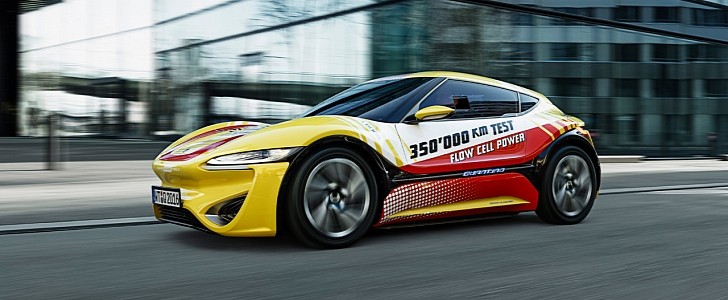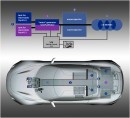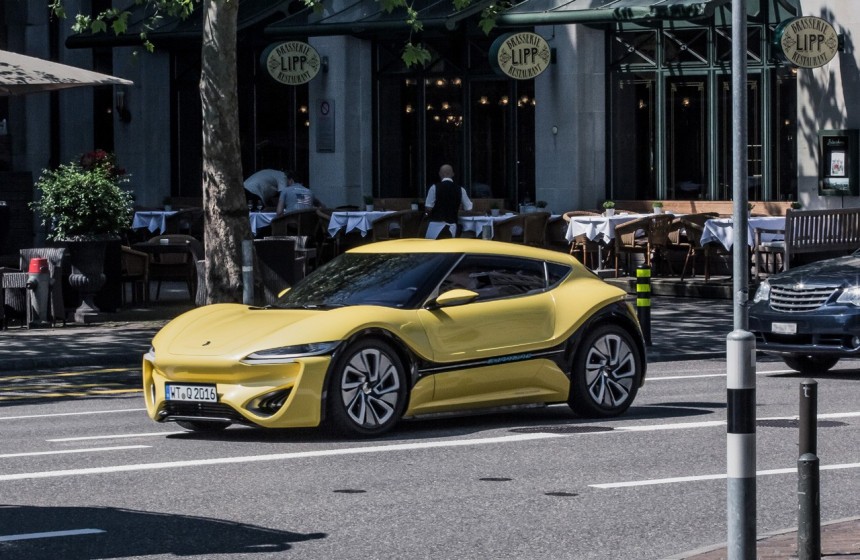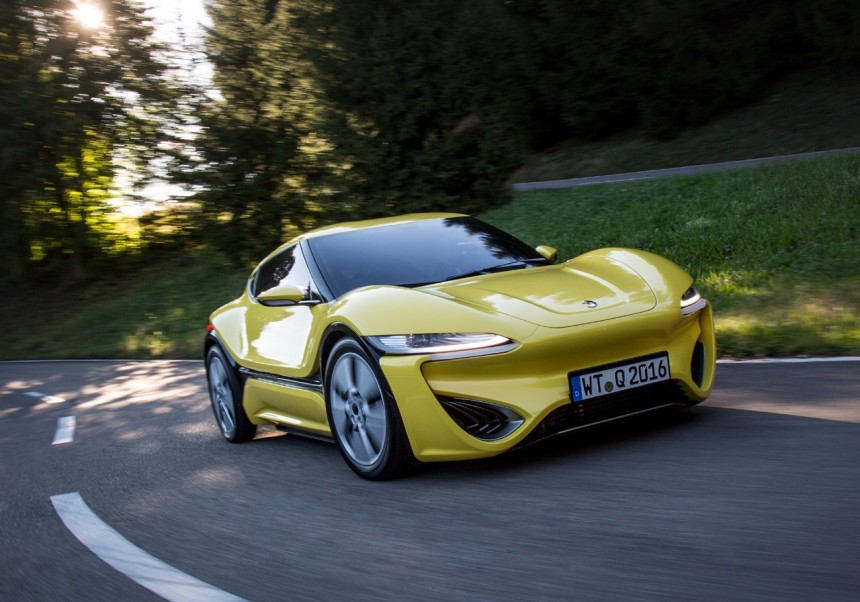Might nanoFlowcell be considered the Tesla of Europe? Or its creator, a kind of european Elon Musk? Yes and no. Yes, because nanoFlowcell vectors its activity toward the integration of electromobility. No, because Nunzio La Vecchia, the founder of the company, is by far less noisy than Elon Musk and, also, he doesn’t seem at all to be in a hurry for hunting money and fame.
25 years passed by since Nunzio La Vecchia achieved his private studies in quantum mechanics and quantum physics, then establishing Juno Technologies, the ancestor of nanoFlowcell Holdings. A lot has happened between 1996 and 2016 regarding the projects initiated by nanoFlowcell, yet in a rather discrete way. Long story short, let’s jump to the Quantino electric prototype, shown to the public for the first time back at the 2015 Geneva Motor Show.
Quantino got rid of the traditional electricity storage in batteries and its electric propulsion system allegedly ensures a range of over 1000 km (620 miles). The nanoFlowcell technology applied to build the energetic heart of the Quantino (it can be regarded as a kind of cell and generator, all in one), is based on a special membrane.
The material it is made of allows the transfer of electrically charged subatomic particles, without an explicit mixture of substances. And here goes the electric current! In chemistry terms, this membrane permits the development of a "redox" phenomenon.
Thus, electricity is generated by the reduction and, respectively, the oxidation of the ions contained by the positively and negatively charged electrolytic liquids being separated by the already mentioned mebrane, as a kind of electric particle filter. This is wha's really sensational about the nanoFlowcell unit as electricity source: it doesn't have any moving parts, it is completely silent and it doesn't interact in any with the environment.
It's all about providing an electric voltage of 48 V to animate four electric motors able to develop, all together, some 136 HP (4 x 25 kW). Quantino’s maximum speed is 200 kph (124 mph) and its range should reach about 1000 km - which sounds like a "goodnight" song even for the most fuel-efficient turbodiesels.
Quantino has a length of 3.91 m and it offers four seats - this kind of data corresponds to the European B-segment standards. As the manufacturer claims, the Quantino was set to be an "electric car for everyone.”
As the potential of the electrolytic liquid inside the fuel cell is decreasing, two tanks (positively and negatively charged liquid) are providing fresh resources. This feeding process was solved by gravitational means. The neutralized liquids are ejected in two other tanks.
Finally, when a complete exhaustion of the onboard reserves is reached, the electrolyte liquid tanks are refilled with electrically active "sauce" (similarly as filling the fuel tank of a car with internal combustion engine). The inert fluids recovered from the car are going thru a "reloading" treatment. Essentially, the electrolytic liquid is not unlike a salt water solution.
Until now, test drives of the Quantino have apparently covered about five hundred thousand kilometers (310,000 miles, which is like going 12,5 times around the world. Many parts of the car had to be fixed or replaced over times, yet the nanoFlow unit remained the same.
“We are convinced of the nanoFlowcell flow cell’s reliability that we guarantee a minumum of 50.000 operating hours. The nanoFlowcell unit will probably survive any other component in the car. It is predestined for long-distance runners such as buses or trucks, but also for a fail-safe stationary energy supply,” says La Vecchia.
Not long ago, nanoFlowcell started to look for a 500.000 square meters surface of industrial land appropriate for a new pilot facility and the QUANT-City innovation centre. As Nunzio La Vecchia declared, “We have achieved a laboratory breakthrough in our bi-ION research that has prepared the way for mass production of the electrolytes - which is a key prerequisite for the market success of our flow cell technology. Supported by investors, we will now build a pilot facility replicating the entire value-creation cycle of our technology. It will serve as a blueprint for further innovation centres for our nanoFlowcell technology to be established worldwide.”
Quantino got rid of the traditional electricity storage in batteries and its electric propulsion system allegedly ensures a range of over 1000 km (620 miles). The nanoFlowcell technology applied to build the energetic heart of the Quantino (it can be regarded as a kind of cell and generator, all in one), is based on a special membrane.
The material it is made of allows the transfer of electrically charged subatomic particles, without an explicit mixture of substances. And here goes the electric current! In chemistry terms, this membrane permits the development of a "redox" phenomenon.
It's all about providing an electric voltage of 48 V to animate four electric motors able to develop, all together, some 136 HP (4 x 25 kW). Quantino’s maximum speed is 200 kph (124 mph) and its range should reach about 1000 km - which sounds like a "goodnight" song even for the most fuel-efficient turbodiesels.
Quantino has a length of 3.91 m and it offers four seats - this kind of data corresponds to the European B-segment standards. As the manufacturer claims, the Quantino was set to be an "electric car for everyone.”
As the potential of the electrolytic liquid inside the fuel cell is decreasing, two tanks (positively and negatively charged liquid) are providing fresh resources. This feeding process was solved by gravitational means. The neutralized liquids are ejected in two other tanks.
Until now, test drives of the Quantino have apparently covered about five hundred thousand kilometers (310,000 miles, which is like going 12,5 times around the world. Many parts of the car had to be fixed or replaced over times, yet the nanoFlow unit remained the same.
“We are convinced of the nanoFlowcell flow cell’s reliability that we guarantee a minumum of 50.000 operating hours. The nanoFlowcell unit will probably survive any other component in the car. It is predestined for long-distance runners such as buses or trucks, but also for a fail-safe stationary energy supply,” says La Vecchia.
Not long ago, nanoFlowcell started to look for a 500.000 square meters surface of industrial land appropriate for a new pilot facility and the QUANT-City innovation centre. As Nunzio La Vecchia declared, “We have achieved a laboratory breakthrough in our bi-ION research that has prepared the way for mass production of the electrolytes - which is a key prerequisite for the market success of our flow cell technology. Supported by investors, we will now build a pilot facility replicating the entire value-creation cycle of our technology. It will serve as a blueprint for further innovation centres for our nanoFlowcell technology to be established worldwide.”













